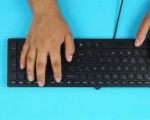How to Fix Common Windows Update Errors
- 1- Understanding Windows Update Errors
- 2- Common Windows Update Errors
- 3- How to Fix Common Windows Update Errors
- 4- Advanced Troubleshooting for Windows Update
- 5- When to Seek Professional Help for Windows Update Issues
1. Understanding Windows Update Errors
Windows updates are essential for keeping your computer running smoothly, but they don't always install without issues. From minor glitches to more severe errors, Windows update problems can arise for various reasons. Understanding why these errors occur and how to address them is crucial for maintaining a secure and efficient system.
In most cases, these errors are caused by corrupted files, outdated system settings, or a slow internet connection. However, identifying the exact cause and applying the correct fix can be a tricky process. In this guide, we’ll walk you through the most common Windows update errors and how to resolve them effectively.
2. Common Windows Update Errors
Several issues can prevent Windows updates from installing successfully. Below are some of the most common Windows update errors and their symptoms:
2.1. Error Code 0x80070002
This error typically occurs when the update process cannot find the necessary files. It can be caused by corrupted or missing system files or incomplete download of the update. It often shows up during a Windows update installation or when the update fails to complete.
2.2. Error Code 0x800F081F
Known as the "Windows Update Missing Files" error, this code can appear if your system is missing specific files necessary for the update process. It can also occur when certain Windows update components are corrupted or disabled.
2.3. Windows Update Stuck at 0% or 99%
One of the most frustrating issues is when updates appear to be stuck at 0% or 99%. This issue could result from background processes, system overload, or an incomplete installation. Sometimes, clearing temporary files or restarting the update process resolves the issue.
3. How to Fix Common Windows Update Errors
Fixing Windows update errors can be time-consuming, but with the right approach, you can resolve most issues efficiently. Below are several solutions to common problems that prevent updates from installing correctly.
3.1. Run the Windows Update Troubleshooter
Windows comes with a built-in troubleshooter designed to identify and fix common update problems. To run it, go to Settings > Update & Security > Troubleshoot > Windows Update and select Run the troubleshooter. This tool can automatically detect and resolve issues related to Windows updates.
3.2. Check for Corrupted System Files
Corrupted system files can prevent Windows updates from installing. You can use the built-in System File Checker (SFC) tool to scan and repair these files. Open the command prompt as an administrator and type sfc /scannow to begin the process. The tool will check for corrupted files and replace them automatically.
3.3. Clear Windows Update Cache
Sometimes, the Windows update cache can become corrupted, leading to errors. You can manually clear the cache by stopping the Windows Update service, deleting the contents of the C:WindowsSoftwareDistributionDownload folder, and restarting the service. This process will force Windows to download fresh updates.
3.4. Reset Windows Update Components
If the above methods don’t work, you can reset the Windows Update components to their default state. To do this, open the command prompt as an administrator and run the following commands:
net stop wuauserv
net stop bits
net start wuauserv
net start bits
These commands will stop and restart Windows Update services, often resolving more persistent issues.
4. Advanced Troubleshooting for Windows Update
For more severe or persistent Windows update issues, you may need to use advanced troubleshooting methods. Here are some additional steps you can take:
4.1. Perform a System Restore
If the update issue started after a recent change, such as an update or new software installation, performing a system restore to a previous point might resolve the issue. To do this, type "System Restore" in the Start menu, select a restore point, and follow the on-screen instructions.
4.2. Check Disk for Errors
A damaged hard drive or disk errors can also prevent Windows updates from completing. To check for errors, run the Check Disk utility by typing chkdsk /f in the command prompt. This will scan and fix any file system errors that might be causing issues with Windows updates.
4.3. Update Windows Manually
If you're still having trouble with Windows updates, you can download the update manually from the Microsoft Update Catalog and install it directly. Visit the catalog website, search for the update code, download it, and then follow the prompts to install it.
5. When to Seek Professional Help for Windows Update Issues
While many Windows update errors can be resolved with the steps mentioned above, there are instances when professional help is necessary. If you’ve tried multiple solutions and the issue persists, or if you’re dealing with more complex system errors, it may be time to contact a technician. A professional can diagnose and repair underlying issues, ensuring that your system is running smoothly.
If you prefer expert assistance, visit Computer Repair, where we offer professional services for Windows issues, including updates and system maintenance. Let us handle the technical side while you enjoy a hassle-free computer experience!































